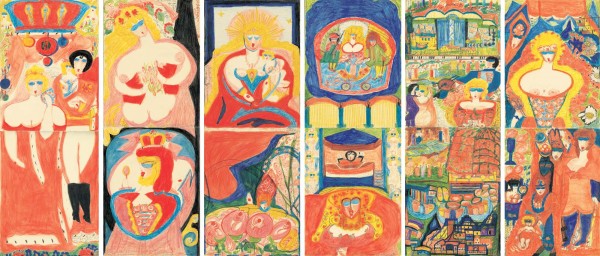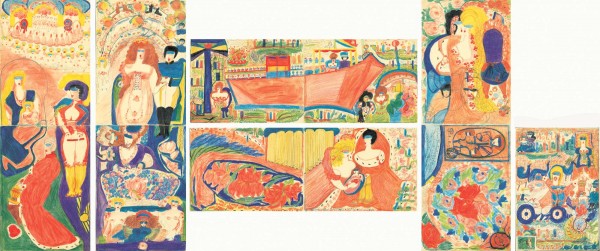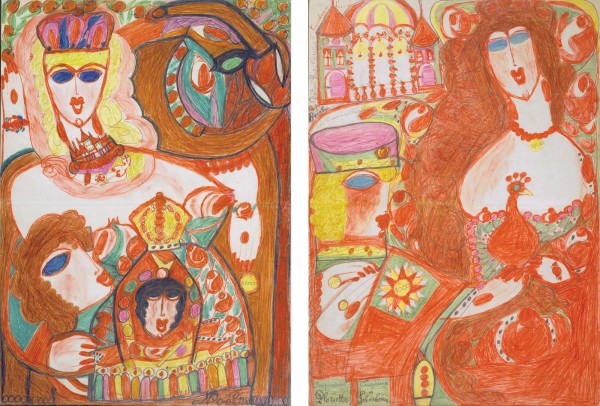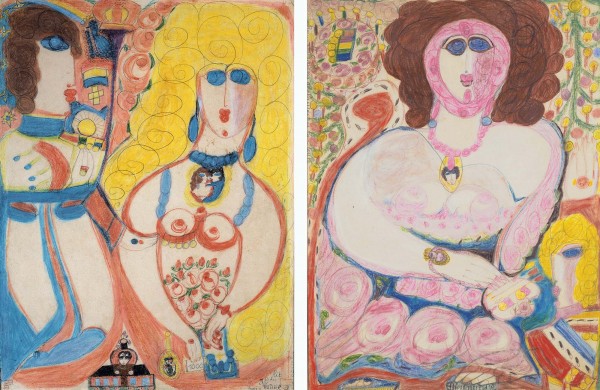Aloise was eleven when her mother died. In 1906 she graduated from high school, fell in love with a student – a relationship which her sister ended violently – and dreamt of becoming a singer. An expatriate in Germany in 1911, she worked as a teacher, then as a governess, especially in Potsdam at the court of Emperor Wilhelm II, for whom she developed an imaginary passion. Her first psychological problems appeared when she was twenty-seven and the declaration of war forced her to return to Switzerland. Hospitalized from 1918, she became resident at the asylum of La Rosière in 1920 until his death. During the first years of institutionalization she isolated herself and suffered from occasional violent outbursts; with time, she gradually adapted to hospital life. Upon her arrival at La Rosière, she began to write and draw in secret – this early work was almost completely destroyed. It was only in 1936 that the director of the hospital and her general practitioner became interested in her work.
Aloise drew on the front and back of each sheet of paper, usually with colored pencils and crayons, but sometimes also with leaf juice or toothpaste, a torrent of characters with blue eyes. For larger formats (some are over ten meters), she stitched several sheets together with yarn.
Aloise proclaimed that she had been struck with a symbolic death, consumating her break with the “the ancient natural world of the past”. “Black Mud”, definitely dead, she was reborn to become the great creator of a work populated with flowers, kings, queens, princes and voluptuous princesses, cakes and circuses, famous and legendary love stories. A great gallery of portraits at once sumptuous and ghostly, of abundant yet expressionless masks.





